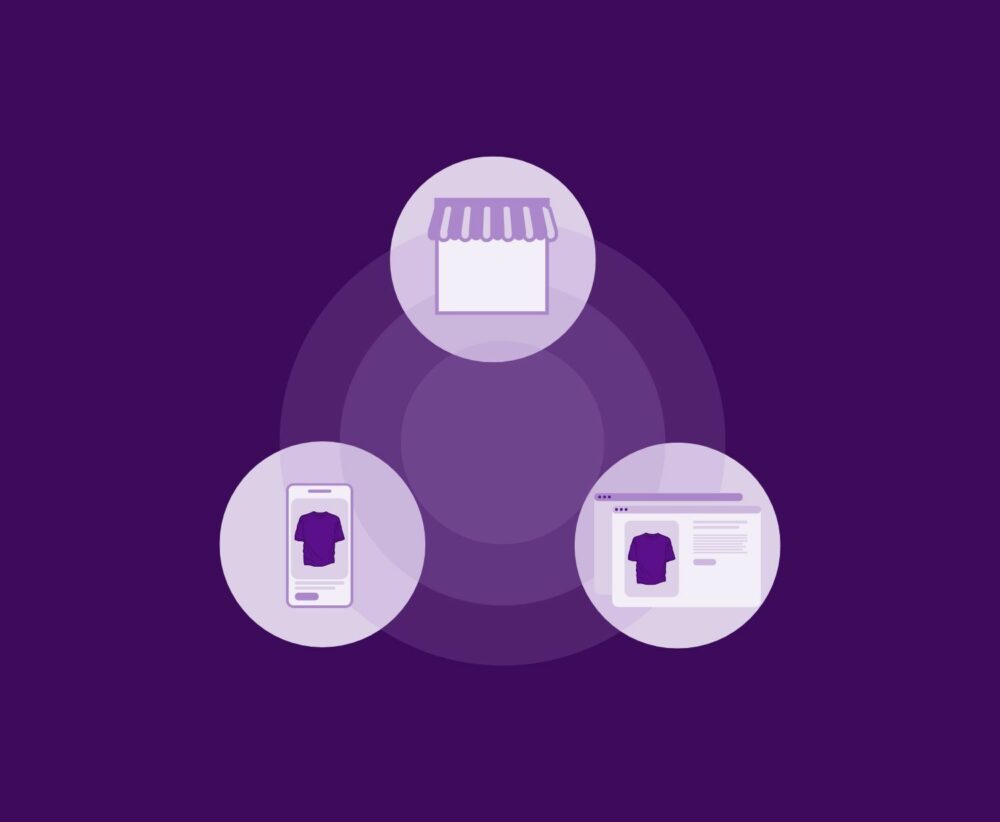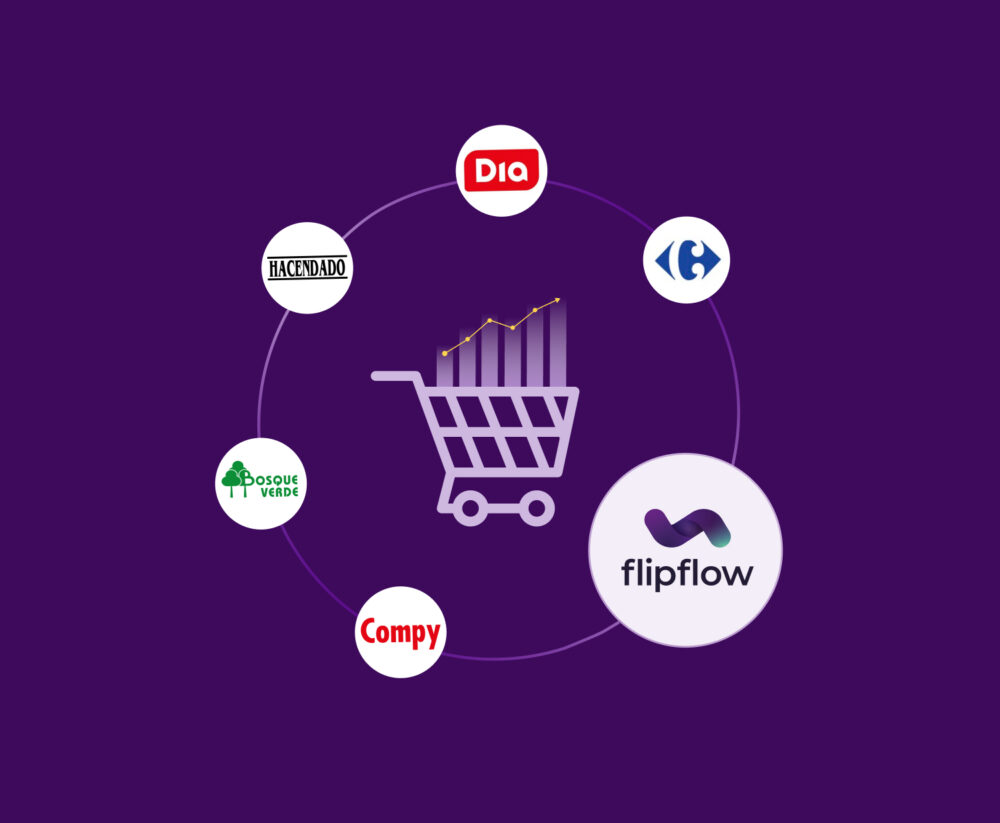6 Retail Media Trends in 2025 You Can’t Ignore
Retail Media has become one of the most important pillars of the global advertising ecosystem. And in 2025, it will enter a new phase. After several years of rapid growth, it is starting to slow down, which presents an opportunity for the industry to mature and continue evolving towards new ways of connecting brands, retailers and consumers.
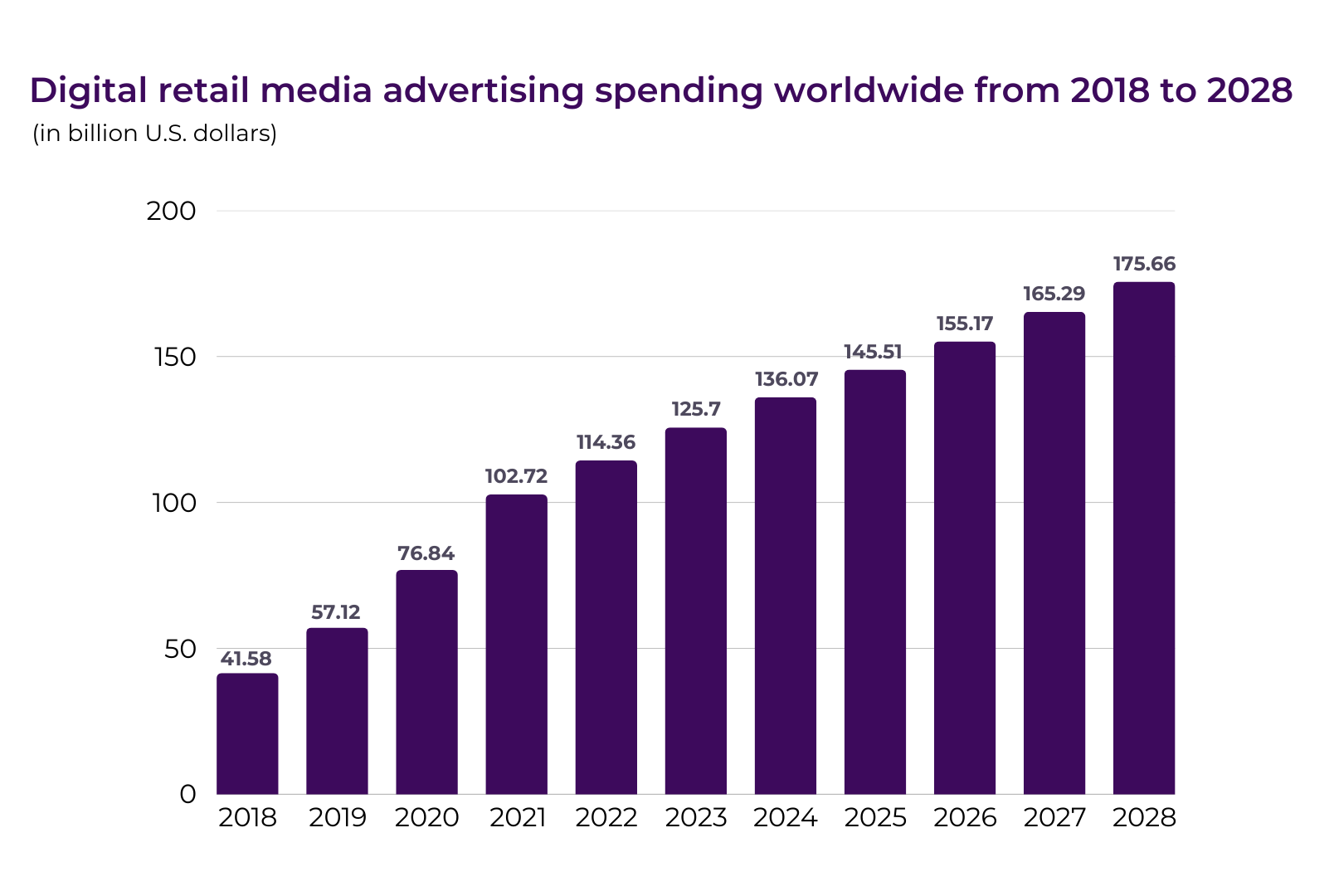
Source: Statista, 2025
According to Statista data, the percentage growth in global Retail Media spending between 2020 and 2021 was 33.68%, while between 2024 and 2025 it will be 6.94%. But, as can be seen in the chart above, the slowdown in growth doesn’t mean a reduction. Retail Media spending will continue to increase steadily until at least 2028.
In this article, we will explore the main trends that will define the growth of Retail Media this year, what impact it will have on the advertising sector and how brands can leverage these opportunities to maximize their reach and ROI.
1. Measuring 2.0: The Challenge of Demonstrating Real Impact
Accuracy in measuring Retail Media and demonstrating its real impact on sales have been two of the biggest challenges for brands and retailers so far. In 2025, the demand for more sophisticated metrics and multichannel attribution will be more critical than ever.
Brands will demand tools that not only measure impressions and clicks, but also offer insights into incrementality, i.e. the actual impact of an advertising campaign on sales; or customer lifetime value. Effective measurement will focus both on campaign performance and a deep understanding of the customer journey, from first exposure to final conversion.
Advanced measurement solutions will incorporate innovative technologies to analyze patterns in greater depth. Integrating data from various sources, such as the company’s own CRM, the global market or e-commerce platforms, will enable a 360º view and better decision-making. In addition, techniques such as match-market testing (comparing similar markets with and without campaign exposure) and machine learning-based models will enable brands to optimize their advertising budgets more precisely, focusing on the channels that really generate a positive return.
Advertisers will demand transparency in reporting, with interactive dashboards that facilitate understanding campaign performance and their return on investment. Collaboration between retailers and brands will be key to establishing common standards for measurement and optimisation. The ability to measure the impact of ads in real time will allow immediate adjustments to improve the effectiveness of advertising strategies.
2. Expansion of Retail Media: The Rise of Off-site Marketing
Traditionally, Retail Media has been limited to the closed environments of retailers, such as their websites and apps. But in 2025, we will see significant expansion into external platforms, such as social media, search engines and third-party sites. Currently, Off-site Retail Media has become the most popular format, used by 36.4% of marketing professionals for their display advertising campaigns (followed by online video and Connected TV).
This approach allows brands to impact consumers before they reach the point of purchase, maximizing conversion opportunities. Furthermore, it also expands brand reach and helps them maintain a presence at every stage of the purchase funnel.
This trend is based on the creation of integrated advertising ecosystems, where retailers expand their digital footprint by collaborating with external platforms. This enables more precise segmentation based on purchase history and browsing behaviour, and generates relevant advertising messages at the right time.
More than half (55.8%) of global marketing professionals were planning to increase their spending on Off-site Retail Media in the run-up to 2024:
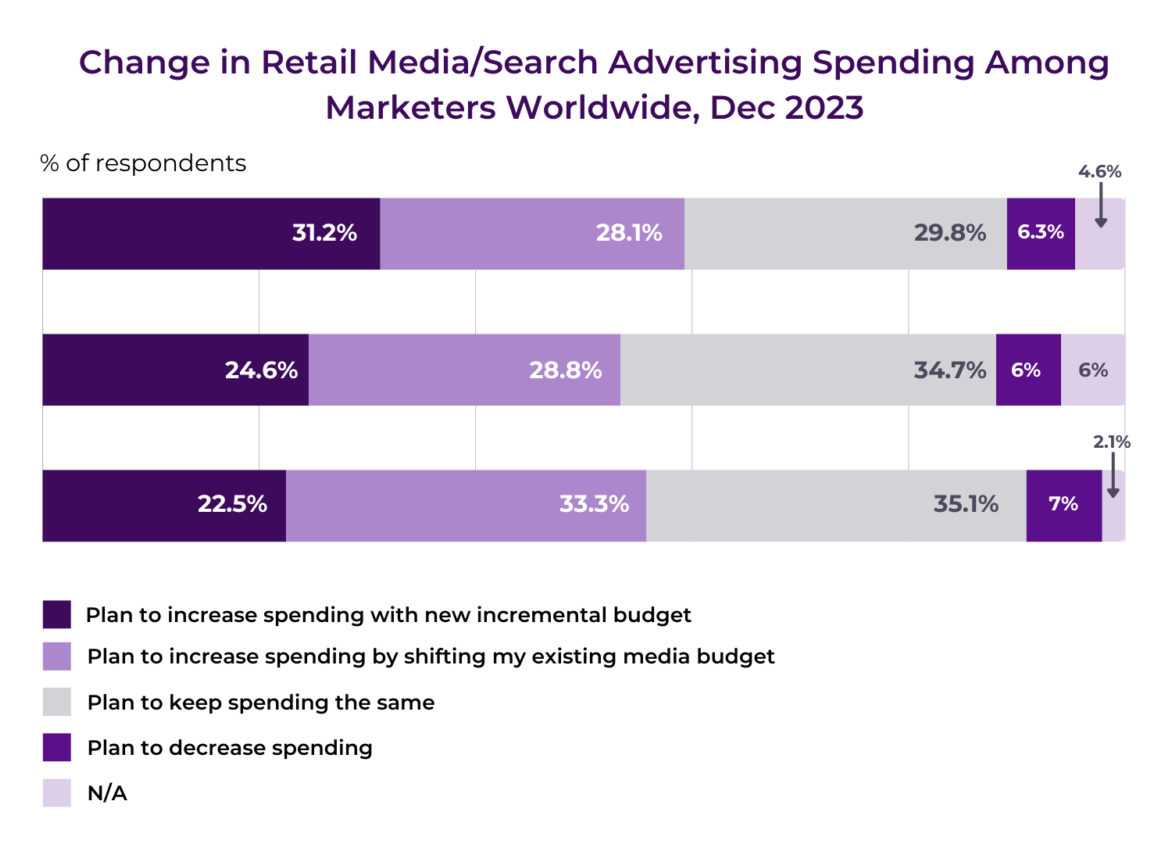
Note: In the next 12 months. Figures may not add up to 100 due to rounding.
Source: TripleLift and Emarketer survey, “Retail Media Perceptions”, April 2024
In 2025, the trend will continue to rise. Off-site Retail Media also opens the door to new monetization opportunities for retailers, who can offer advertising space on their own platforms to other brands or retailers. This results in a diversified revenue model and increased competition in the advertising market. Brands will need to be more creative in how they connect with consumers outside the traditional shopping environment.
3. Hyperpersonalisation: The Key to Capturing Consumer Attention
Personalisation is no longer an option; in 2025, it will be a necessity to capture consumer attention. Thanks to the evolution of artificial intelligence and predictive analytics, retailers will be able to offer unique experiences, adapted in real time to the behaviours and preferences of each user. Personalisation will advance to a level where every interaction is unique and specific to each individual.
30% of consumers in Europe and the US state that the personalization feature they value most is receiving messages and offers that seem tailored to them. Hyperpersonalisation will allow brands to create ads and recommendations that are tailored not only to the user’s purchase history but also to their real-time context, such as location, weather and market trends. This will generate a greater emotional connection and increase the likelihood of conversion. Consumers expect a high degree of relevance in their interactions with brands. Those that fail to deliver this risk losing loyalty.
On the other hand, consumers want to receive relevant content without feeling their privacy is being invaded. As generative AI is increasingly used in creative development, advertisers will need to be more cautious in its use. Most consumers (76% according to an eMarketer and CivicScience survey) are uncomfortable with AI tools using their personal information to enhance their shopping experience. Responsible data management will be a critical aspect of ensuring customer trust and regulatory compliance. Businesses will need to strike a balance between personalization and privacy, implementing transparent data usage strategies.
4. In-Store Retail Media: Full Integration for an Omnichannel Experience
Retail Media will not only dominate the digital environment; in 2025, its integration with physical stores will be a tangible reality. The digitalization of shopping spaces will allow retailers to seamlessly connect online and offline experiences. Physical stores will become real-time data centres, offering valuable insights into consumer behavior.
Although advertising spend on Retail Media In-Store will continue to be less than 1% of total Retail Media spending in the United States through to 2028, it will grow steadily over the next three years.
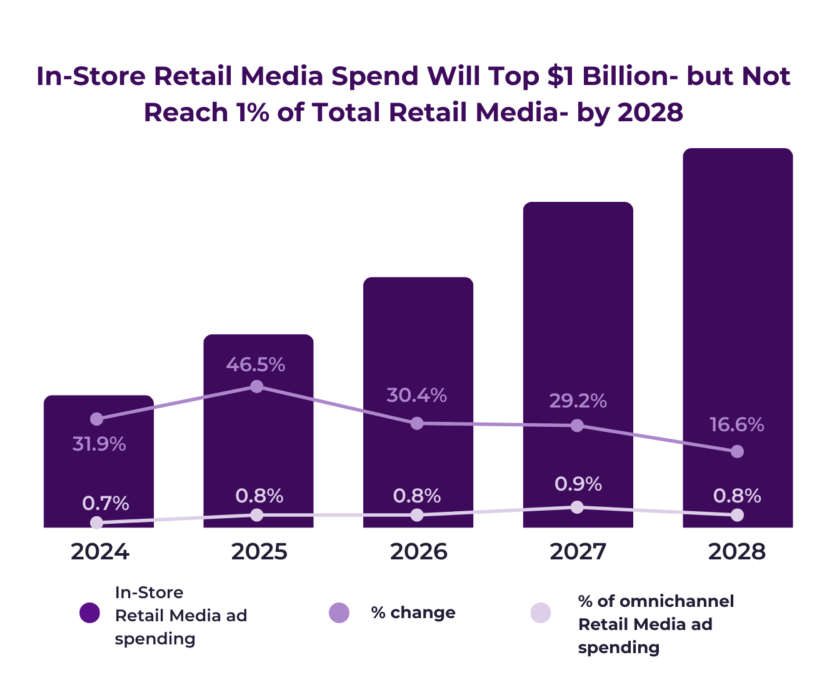
Note: Digital advertising appearing on in-store signage, either in the store or immediately adjacent exterior; includes advertising in grocery stores, petrol stations, restaurants, etc.; excludes signage for common areas not directly affiliated with the retailer.
Source: EMARKETER Forecast, March 2024
The biggest barrier to full adoption of this trend is that it generally requires a very high investment in new technologies to adapt stores to Retail Media advertising formats. And at the end of the day, advertisers still prefer to invest in widely established formats such as On-Site ads or paid campaigns.
In any case, retailers who do invest in implementing In-Store Retail Media strategies will be able to impact shoppers in real time, with personalized offers, product demonstrations and relevant content based on their location within the store. This will take the shopping experience to a new level, combining the best of both physical and digital worlds.
5. Adaptive Commerce: The Perfect Combination of Data and Agility
As already mentioned, personalization remains a priority for consumers. In 2025, we will see a significant increase in the use of advanced technologies to enhance the customer experience.
Identity frameworks and Data Clean Rooms (secure environments where brands and retailers can share data without compromising privacy) will be key tools. Thanks to these technologies, retailers will be able to personalize offers and ads in real time based on precise data on consumer behaviour, demand, seasonality or location. For example, a customer browsing an online store could receive personalized recommendations based not only on their purchase history but also on contextual data such as their location or the local weather.
This ability to respond quickly will allow retailers to offer highly relevant promotions and messages, maximizing their impact and profitability, regardless of where and how customers choose to buy.
6. Advertising Efficiency: Doing More with Less
Finally, advertising efficiency will be another major priority for Retail Media in 2025. With advertising budgets under constant scrutiny and the economy facing headwinds (due to inflation and deflation in some sectors), brands will look for ways to optimize every euro invested.
This will involve greater automation of processes, the use of Artificial Intelligence for performance optimization and a more rigorous approach to segmentation to reduce wasted advertising spend. In addition, retailers will also need to refine their offerings and provide more standardized measurements to maintain advertiser confidence. The key will be to strike a balance between reach and precision to achieve effective results without inflating the budget.
Although growth may slow, this shift towards advertising efficiency will help the sector mature in the long term.
Conclusion: Adapt or Be Left Behind
Retail Media has evolved at an accelerated pace in recent years. And although it has entered a phase of deceleration, in 2025 we find ourselves in a completely transformed landscape. It’s no longer a revolution but an evolution, as Jeffrey Bustos, vice-president of the Measurement Addressability Data Center at IAB, commented a few weeks ago in an article exploring the future of Retail Media.
The sector is entering a refinement phase, where smarter strategies, better measurements and closer collaboration will drive results.
Today’s Retail Media is a reflection of constant innovation. Those who don’t adapt to this new reality risk losing relevance in a constantly evolving market. With the whole year ahead to make it happen, brands that adopt a proactive approach, invest in technology and prioritize the consumer experience will be better positioned to capitalize on the opportunities that this dynamic ecosystem offers. The time to act is now.

